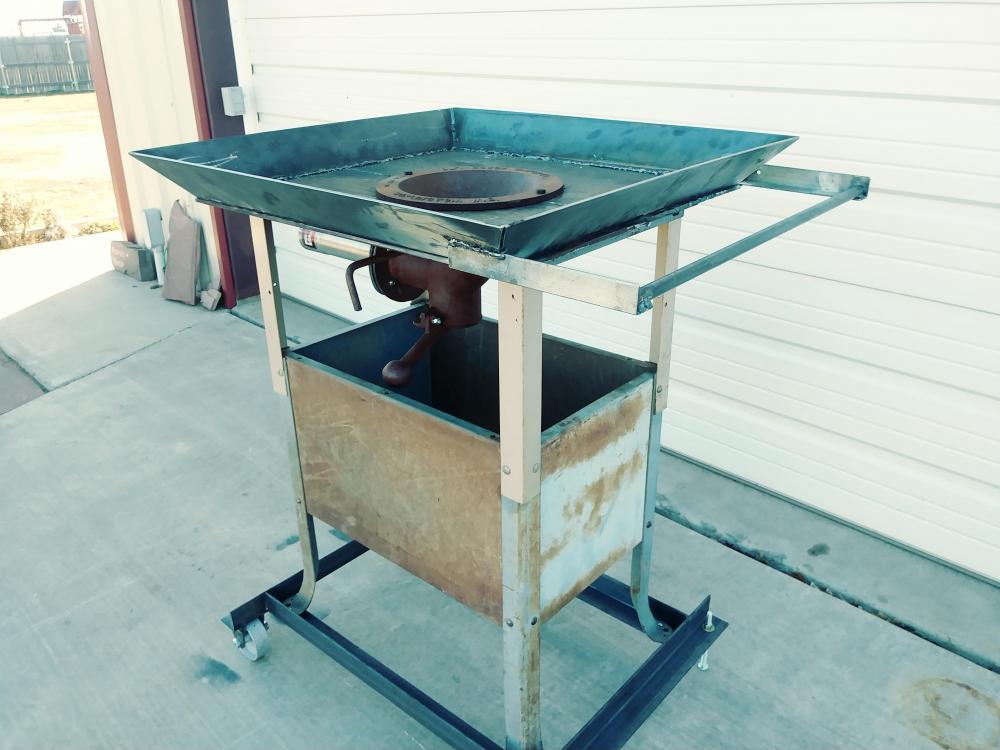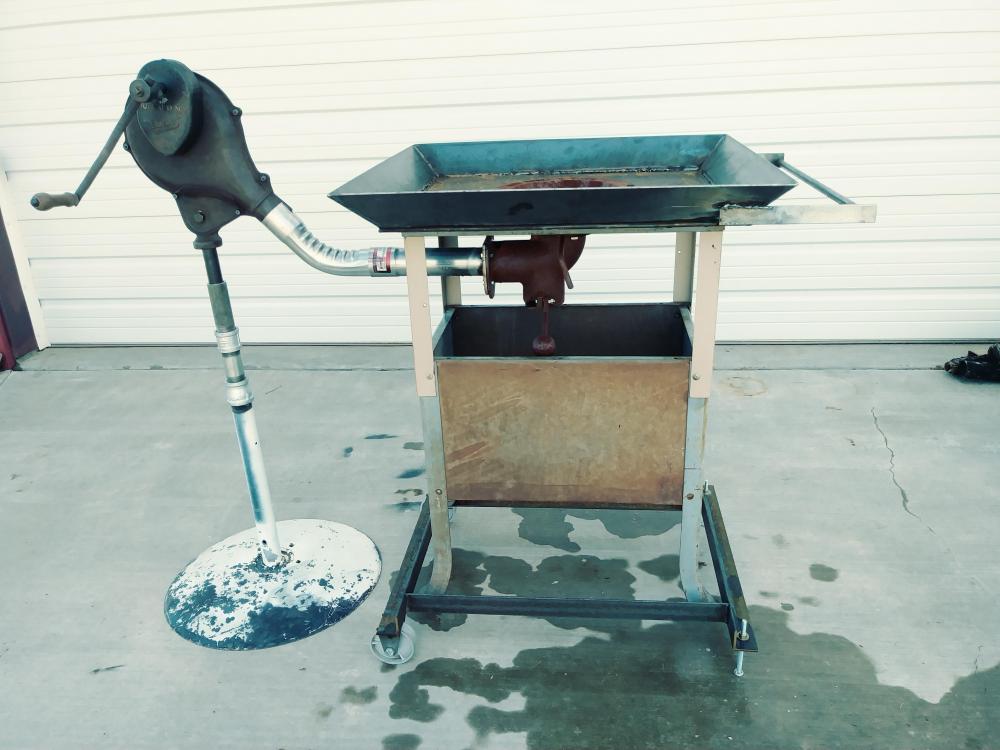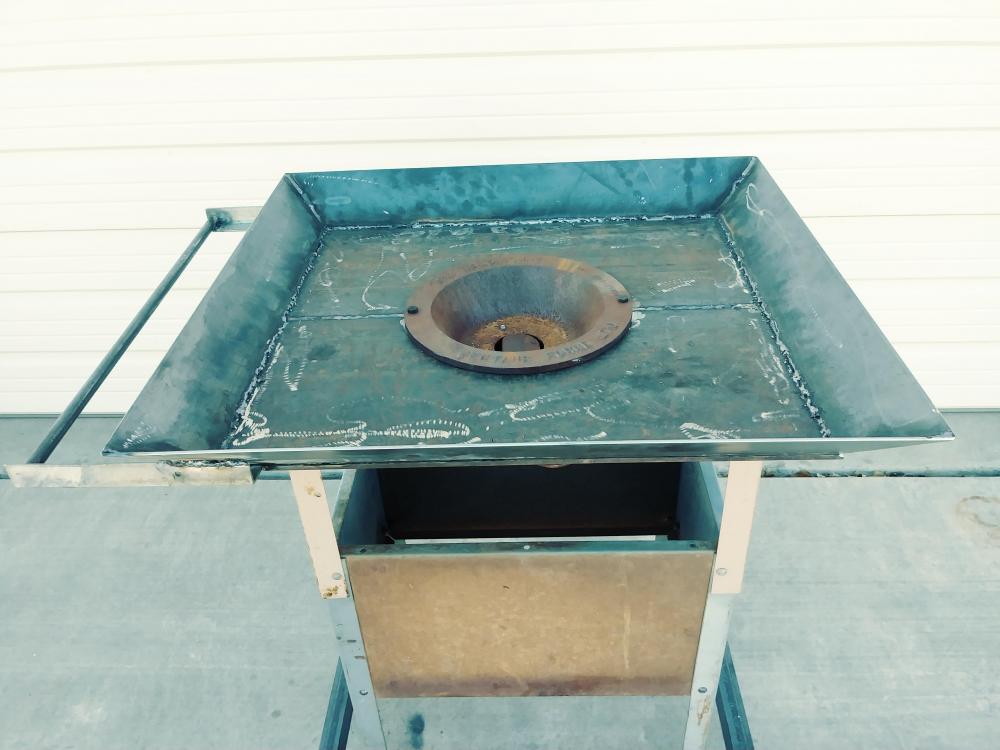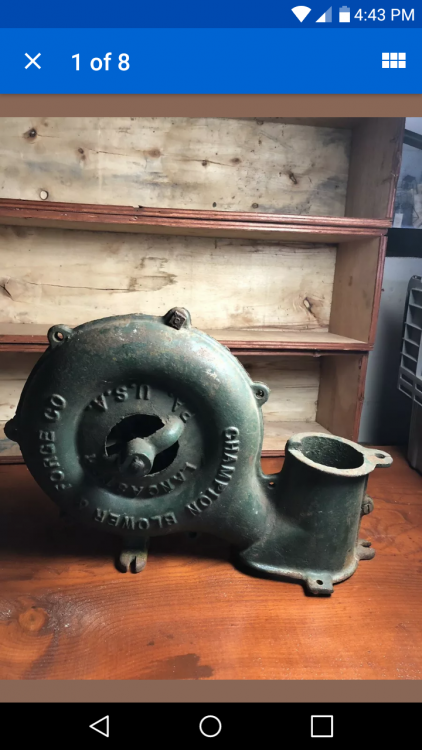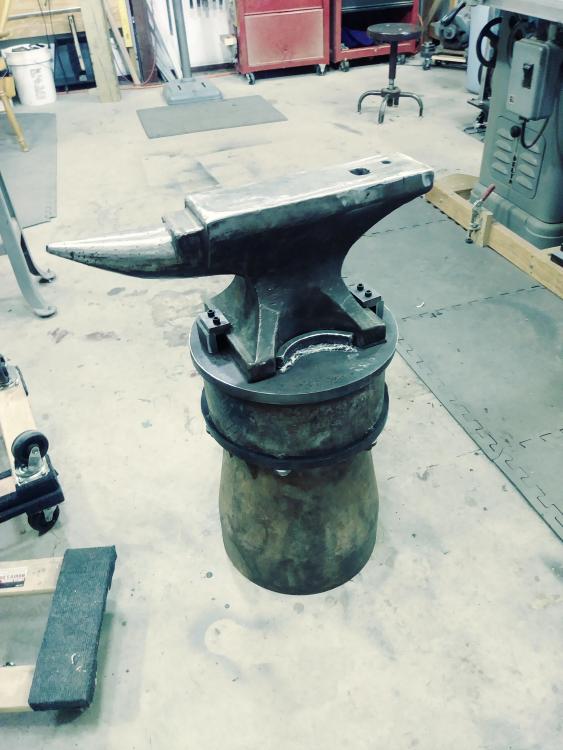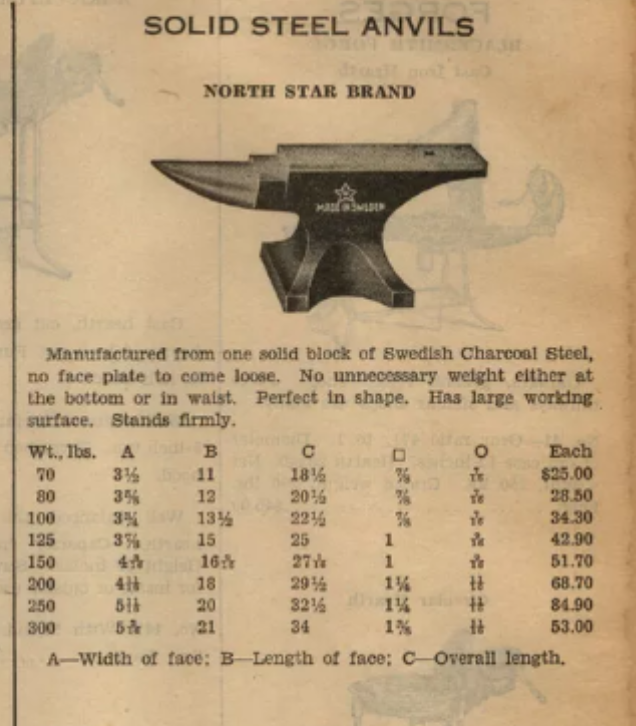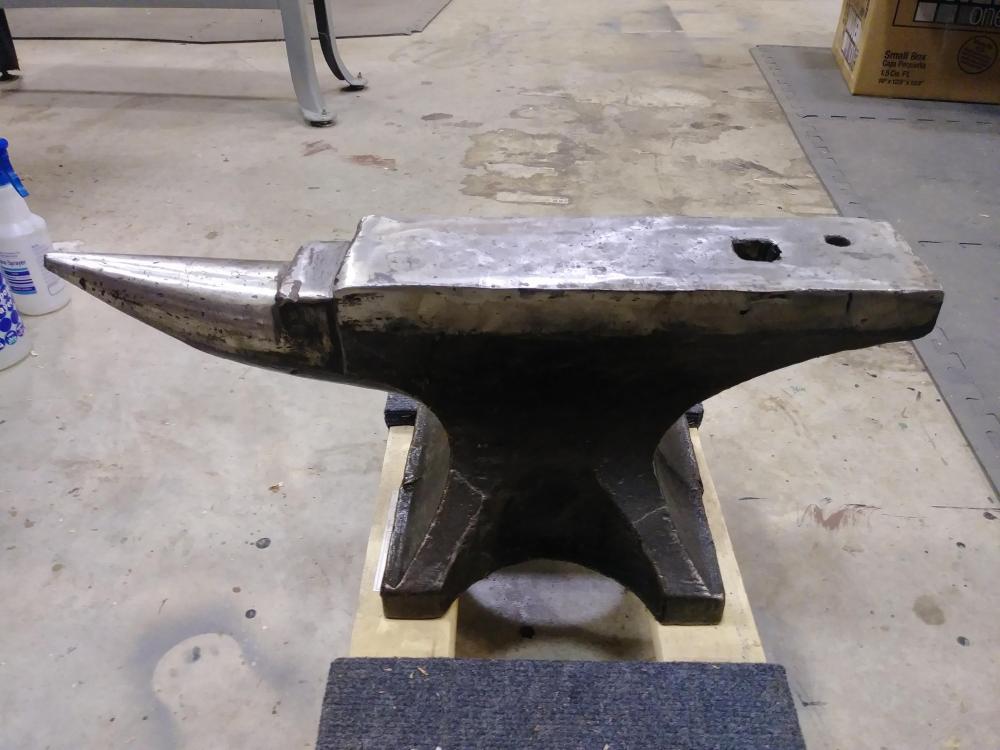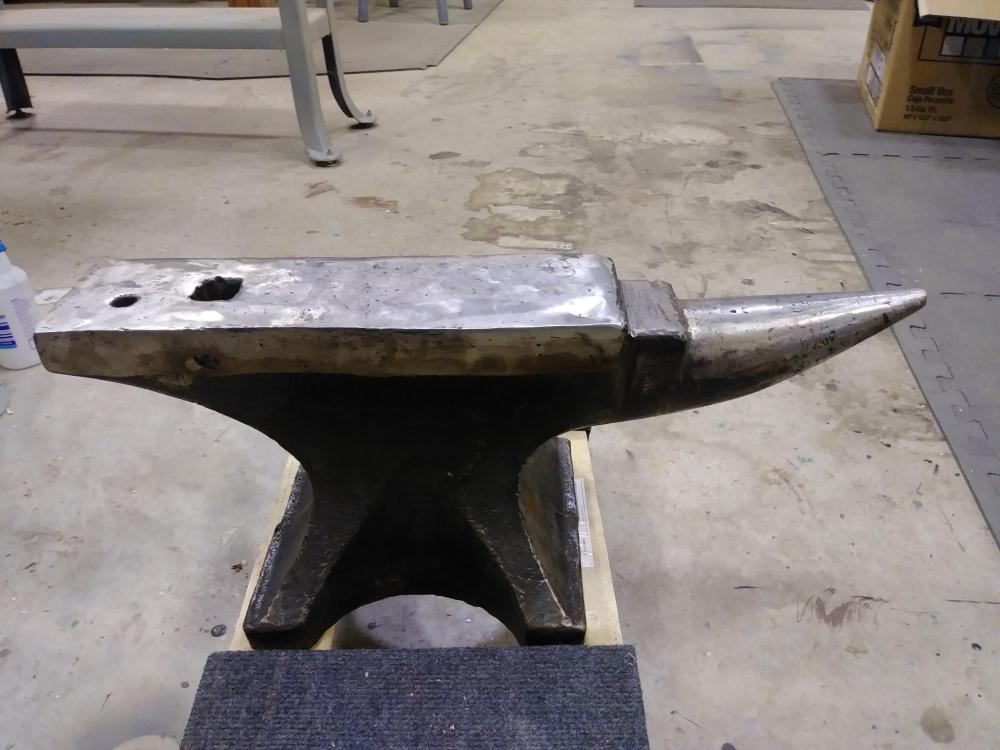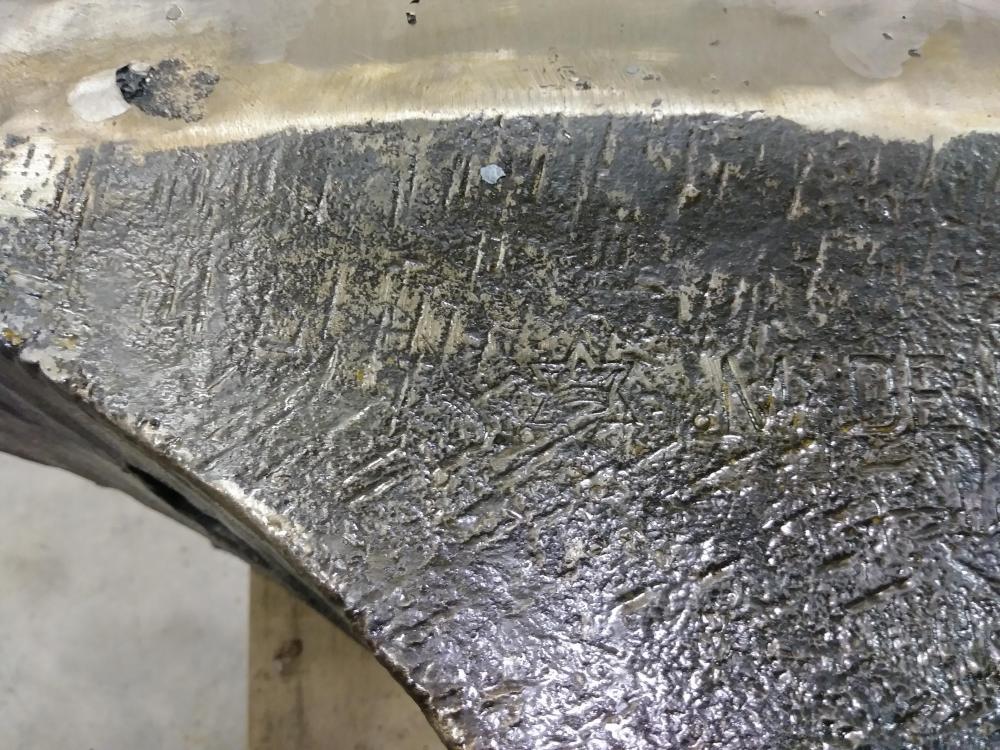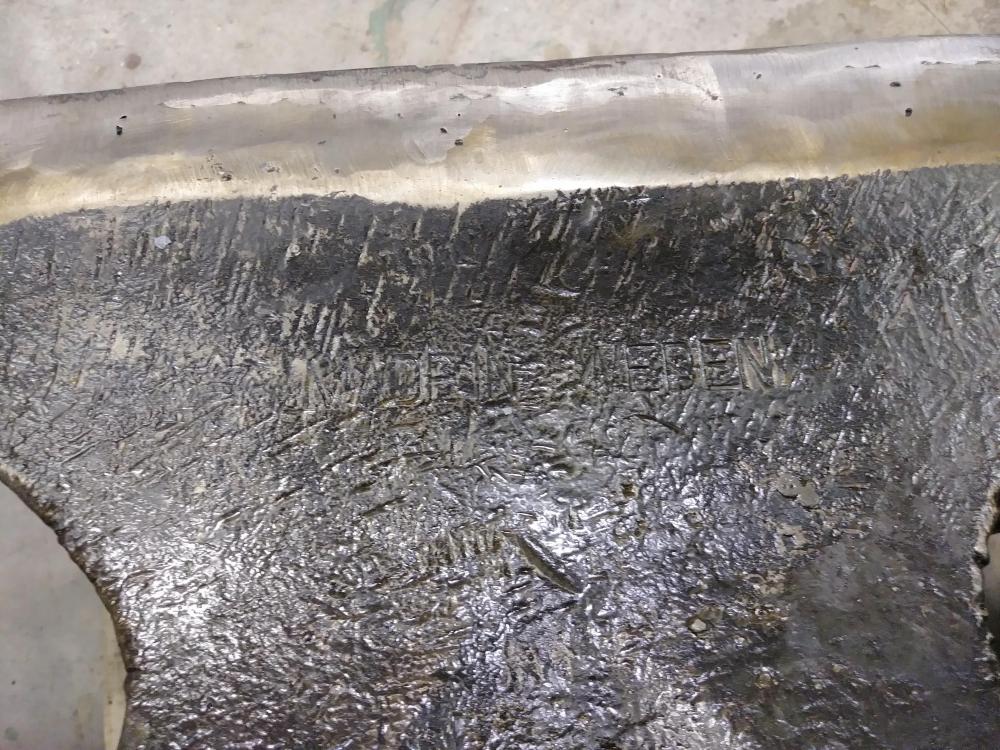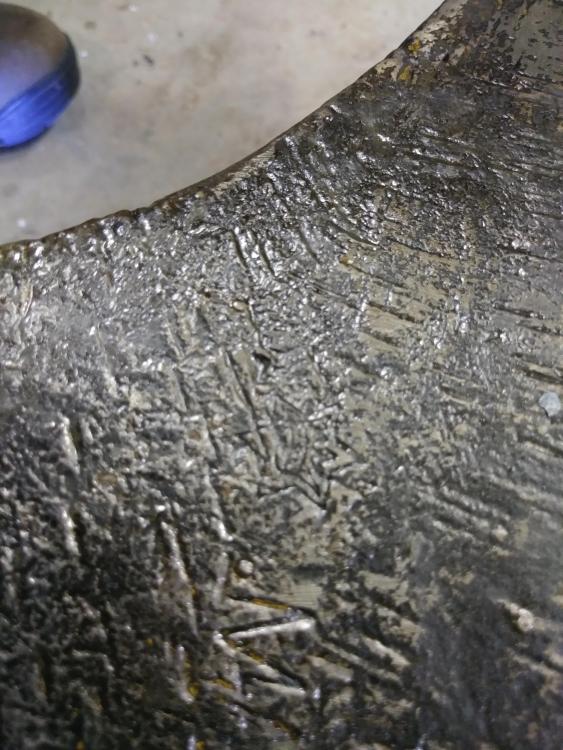
DanJohnson
Members-
Posts
16 -
Joined
-
Last visited
Content Type
Profiles
Forums
Articles
Gallery
Downloads
Events
Everything posted by DanJohnson
-
First fire in new forge!
DanJohnson replied to Elemental Metal Creations's topic in Solid Fuel Forges
What does your hood look like outside? Looks to be working really well. Dan -
That is an exceptionally nice vise. Wow. Outstanding find and respectful restoration. That's a vise that would never leave my shop once it had entered. Dan
-
My current air piping is a prototype setup. When I firm it up, I'll put a tee in so I can have a secondary air supply from a "constant" source. That way, I can use either. I'd prefer using a hand crank and will source future coal accordingly. Can bituminous coal be broken up in your hands easily? Mine seems to hard fur that. Maybe I'm not 100% sure about it being anthracite. I assumed so... FYI, the "box" below the clean out tee is open bottomed. I'll have more to report when I actually burn coal in it.
-
I had already planned to add notches but decided to wait until my personal preference (after use) of front-to-back or side-to-side lay-out is decided. I picked up a deal on close to 400 lb of coal I'm itching to get into. Dan
-
I just finished restoring a Bufco blower and fabricating a bottom blast coal forge. I intended to "first fire" it yesterday but the wind kicked up and I thought better of it. I purposely used as much on-hand materials and components as I could to keep the cost down and thin the "clutter". I found a local guy selling an unused Centaur fire pot assembly (for a fraction of the cost) after changing his mind about his forge plans. Photos:
-
I just finished restoring a Buffalo Forge blower. Mine was a little simpler but the same in principle. I doubt there's anything drastically wrong with your unit. To accommodate reasonable manufacturing tolerances, they used shims to position the gears on the shafts and align the meshing teeth. Find some thin quasi- precision washer/ shims (mine are brass) and start playing with it. Due to the high speed increase, it takes a lot of torque to turn these. A bind anywhere in the gear train is hard to overcome. Obviously, getting the gears in the right places matter. Hopefully you took pictures you can look at. Good luck. Dan
-
Any idea of the approximate speed the blower below was meant to run at? It has a belt/pulley and it isn't clear to me if it was meant to run off a motor or hand crank system. Thanks in advance. Dan
-
New with a Kohlswa Anvil (I think)
DanJohnson replied to DanJohnson's topic in Anvils, Swage Blocks, and Mandrels
I finally got my anvil mounted. When I got it it came on a very crude stand assembly but some of the components had promise. The base section is a VERY heavy cast iron/steel turbine pump section with an approximate weight of north of 300#. The middle portion was a section of thick wall steel pipe which bolted to the cast base with studs welded to the pipe. I cut away a very crude mounting arrangement on top of the pipe section and shortened the pipe to the anvil working height I was shooting for. I then welded a round 3/4" steel plate to the thick wall pipe. The crescent-shaped locators were salvaged from the original crude arrangement. My welding is still a bit crude but I'm making progress... To dampen out the ringing, I put 3/16 EPDM rubber between : 1. The pipe section and casting, 2. The anvil and the 3/4" plate, and 3. A boss on the casting which reaches up under the 3/4" plate (not visible in the photo). I finalized the mounting by clamping the anvil to the 3/4" plate with toe-clamps. The mounting is rock solid and the rubber interfaces dampen the ringing nicely. I'd estimate 500 lbs (+) total but its fairly easy to move by rolling on the edge of the base. I finished up by carefully radiusing the edges of the anvil face to get rid of the sharp corners. I'm very pleased with how it turned out. I've been rounding up some very nice hammers and am about ready to start. I've found a propane forge I can borrow until I make a decision between coal and propane. I'm about to go get some sucker rod and begin making tongs and a few hardies. Enough words... Enjoy the eye candy. Dan -
New with a Kohlswa Anvil (I think)
DanJohnson replied to DanJohnson's topic in Anvils, Swage Blocks, and Mandrels
You know your anvil better than anyone but I'd be surprised if it has a hardened face. Didn't think the Swedes ever did that. I think charcoal steel relates to the process of the iron making. In most modern iron making, coal is used. In some processes, charcoal was used. Apparently, it helps create a tough and durable iron. -
New with a Kohlswa Anvil (I think)
DanJohnson replied to DanJohnson's topic in Anvils, Swage Blocks, and Mandrels
BTW, the clip above is from the Janney, Semple, Hill & Co. Catalog from 1934. They were a big supplier of hardware, dry goods, etc. (along the lines of the old Sears & Roebuck) located in Minneapolis. So.....that's where I'm going to date mine until told otherwise. I feel pretty certain mine is a North Star (aka Kohlswa). Again, open to changing my opinion on that when shown better data than I've come up with. -
New with a Kohlswa Anvil (I think)
DanJohnson replied to DanJohnson's topic in Anvils, Swage Blocks, and Mandrels
I did find this the other day. Apparently, North Star imported Kohlswa anvils. My 125# Kohlswa conforms fairly well to the dimensions in the table. Dan -
New with a Kohlswa Anvil (I think)
DanJohnson replied to DanJohnson's topic in Anvils, Swage Blocks, and Mandrels
Ausfire, Nice Kohlswa anvil in it's natural habitat. I've not seen anything helpful relative to coming up with a vintage on these anvils. It'll turn up at some point. Dan -
New with a Kohlswa Anvil (I think)
DanJohnson replied to DanJohnson's topic in Anvils, Swage Blocks, and Mandrels
IF&C, Yep, I saw and read that post. It was informative. I'll be pounding on the anvil soon. Trying to decide on a forge...coal or propane. I'd still like to understand it better. That kind of stuff really interests me. I doubt I need to explain that to any of you. Dan -
New with a Kohlswa Anvil (I think)
DanJohnson replied to DanJohnson's topic in Anvils, Swage Blocks, and Mandrels
Urge to resurface completely managed... Also, profile updated. -
First of all, I’m a total newb…to the site and blacksmithing. I’ve been reading posts on the site for quite a while and have enjoyed reading along and have enjoyed the feel and depth of the discussions. I have read the forum rules and recommendations for getting a along with the community. It all sounds good. I’m a long time woodworker and equipment restorer but have wanted to tinker with blacksmithing for some time. I have done a lot of metal working to support my restorations and in my job (I’m a mechanical engineer with almost 40 years of experience). I’d like to delve into forged hardware, maybe cutting tools, and wood/metal mixed media furniture. I’m actively looking for ABANA classes and experienced smiths in my area. Enough about me… I’ve been watching anvils for some time and have been alarmed by rising prices and I’m in an area where they are hard to find. As a result, I went ahead and bought an anvil this weekend that was relatively close. I suspect I paid too much for it but I’ll survive that injustice. It weighs 125 lb. Its top is pretty flat but has been messed with a little. The guy I bought it from swears he only cleaned up the top with a flap wheel and I believe him. He treated the body with linseed oil (thus the slight gloss) which I plan to remove. I feel pretty certain it saw some localized repair welding and light grinding at some point in its past. It has great rebound (80% - 90%) and rings nicely. I’m 90’sh percent sure it’s a Kohlswa. I’ve attached photos below. The “MADE IN SWEDEN” stamping is very clear. The crown in the star is also clear but the star is 6-pointed in lieu of the typical 5-pointed stars I’ve seen on most. There is something to the left of the star that almost looks like another stamp but I haven’t figured it out. I have carefully searched the site for the answers to the below before pinging the collective intelligence. Being new, it’s possible I did not search carefully enough. I’m slow but I’ll learn. If you need/want additional photos to help assessment, please advise and I'll add them. Several questions: 1. Do y’all agree with my assessment it’s a Kohlswa? 2. If so, any idea of its approximate vintage? 3. If I later decide to pay someone to fly-cut or surface grind the top, how deep dare I go? Any idea of the approximate depth of the hardness? I seriously doubt I’ll ever do this. Just would like to know. While not perfect, the anvil is way nicer than I have any right to own considering my knowledge and experience. Looking forward to learning enough to utilize it properly. Thanks in advance for reading along and weighing in. Regards, Dan
